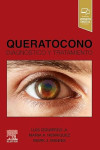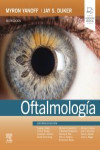INTEGRATED MICRO-RING PHOTONICS: PRINCIPLES AND APPLICATIONS AS SLOW LIGHT DEVICES, SOLITON GENERATION AND OPTICAL TRANSMISSION
Sadegh Amiri, I. - Afroozeh, A. - Ahmad, H.
Producto agotado
Datos técnicos
- ISBN 9781138027831
- Año Edición 2017
- Páginas 164
- Idioma Inglés
Sinopsis
Micro-ring resonators (MRRs) are employed to generate signals used for optical communication applications, where they can be integrated in a single system. These structures are ideal candidates for very large-scale integrated (VLSI) photonic circuits, since they provide a wide range of optical signal processing functions while being ultra-compact. Soliton pulses have sufficient stability for preservation of their shape and velocity. Technological progress in fields such as tunable narrow band laser systems, multiple transmission, and MRR systems constitute a base for the development of new transmission techniques. Controlling the speed of a light signal has many potential applications in fiber optic communication and quantum computing. The slow light effect has many important applications and is a key technology for all optical networks such as optical signal processing. Generation of slow light in MRRs is based on the nonlinear optical fibers. Slow light can be generated within the micro-ring devices, which will be able to be used with the mobile telephone. Therefore, the message can be kept encrypted via quantum cryptography. Thus perfect security in a mobile telephone network is plausible. This research study involves both numerical experiments and theoretical work based on MRRs for secured communication.
Features
Presents novel techniques to generate nonlinear optical communication signals in the form of soliton.
Discusses the usage of micro-ring resonators as passive devices, introducing a new integrated photonics device.
Introduces basic methods and solutions to generate optical communication signals in the soliton form.
Shows a new technique of data transmission and receiving data using stable optical signals such as soliton.
The fabrication data can be a main reference for those working on design or characterization of the integrated photonics systems.
Contents
1 Soliton signals propagating in fiber waveguides and slow light generation
1.1 Fiber waveguides
1.2 Optical soliton
1.3 Ring resonators
1.4 Applications of ring resonator systems
1.5 Introduction of slow light
1.6 Slow light
1.7 Background of slow light generation
1.8 Problem statement
1.9 Research achievements
1.10 Scope of research
1.11 Significance of study
1.12 History of slow light generation
1.13 History of slow light
2 MRR systems and soliton propagating in optical fiber communication
2.1 Soliton properties
2.2 Evaluation of soliton signals
2.3 MRR used to generate chaotic signals
2.4 Resonance bandwidth of soliton
2.5 Finesse of soliton
2.6 Free Spectral Range (FSR) of soliton
2.7 Quality factor of soliton
2.8 Chaotic soliton signal generator
2.9 Add/Drop filter system
2.10 Half panda ring resonator function
2.11 PANDA ring resonators
2.12 Fiber nonlinearities
2.13 Calculation of nonlinear refractive index
2.14 Nonlinear Schrödinger equation (NLS equation)
2.15 Temporal soliton
2.16 Gaussian beam
2.17 Dispersion
2.18 Group velocity dispersion
2.19 Self Phase Modulation (SPM)
2.20 Chaotic phenomena
2.21 Kramers-Kronig relations
2.22 Scattering matrix method for ring resonator
2.23 Theory of slow light
2.24 Optical buffer
3 Analysis of single Micro-Ring Resonators (MRR), add/drop filter MRR and cascaded MRR
3.1 Single Micro-Ring Resonator (MRR)
3.2 Analysis of Single Micro-Ring Resonator (SMRR)
3.3 Soliton roundtrip and add/drop system
3.4 Characteristics of the ring resonator
3.5 Free Spectral Range (FSR)
3.6 Full Width at Half Maximum (FWHM)
3.7 Finesse
3.8 Quality factor (Q factor)
3.9 Group velocity and phase velocity
3.10 Semiconductor cascaded MRR analysis and characterization
3.10.1 Introduction of optical filters MRRs
3.11 Theoretical background of cascaded MRR system
3.12 Phase and dispersion responses and group delay analysis of the cascaded MRR system
4 Physics and fabrication of Micro-Ring Resonator (MRR) structure devices
4.1 Introduction
4.2 Physical of micro-ring resonators
5 Micro-ring modulators
5.1 Introduction
5.2 Micro-ring used as modulator
5.3 Frequency-dependent micro-ring transmission
5.4 Optical modulator based on MRRS integrated with Mach-Zehnder Interferometer (MZI)
6 Micro-Ring Resonator (MRR) in optical transmission systems
6.1 Micro-ring resonator systems in optical communication systems
6.2 Theoretical background of soliton propagation in nonlinear Kerr medium
6.3 Result and discussion
7 Methods of slow light generation
7.1 Introduction
7.2 Dispersion in optical waveguide
7.3 Slow light generation using nonlinear waveguide
7.4 Slow light generation using linear waveguide
7.5 Examine of dispersion waveguides
7.6 Applications
8 Soliton generation and transmission in optical fiber link
8.1 Soliton chaotic signal generation using the MRRs
8.2 Single dark and bright soliton generation
8.3 Soliton comb generation using the add/drop system
8.4 Add/drop filter system incorporating with series of ring resonator
8.5 Ring resonator system analysis to optimize the soliton transmission
8.6 Ring resonator for communication applications
8.7 Highly chaotic signal generation and transmission using PANDA ring resonator
8.8 Dark soliton generation and tweezers transmission using fiber optic link
8.9 Quantum entangled photons generation by tweezers and transmission using the wireless access point system
9 Conclusion
Author(s) Bio
Dr. I.S. Amiri received his B. Sc (Hons, Applied Physics) from Public University of Oroumiyeh, Iran in 2001 and a gold medalist M. Sc. from Universiti Teknologi Malaysia (UTM), in 2009. He was awarded a PhD degree in nanophotonics in 2014. He has published more than 260 journals/conferences and books in Optical Soliton Communications, Nano photonics, Nonlinear Fiber Optics, Quantum Cryptography, Optical Tweezers, Nanotechnology, Biomedical Physics and Biotechnology Engineering.
Dr. Abdolkarim Afroozeh completed his MSc in the field of Astronomy at Shiraz University, Iran, in 2001. He was awarded a PhD degree in photonics from Universiti Teknologi Malaysia (UTM) in 2014. He has published more than 70 journals/conferences papers and books/chapters in Optical Soliton Communications, Laser Physics, photonics, Nonlinear fiber optics, Quantum Cryptography, Nanotechnology, Biomedical Physics and Biotechnology Engineering. Now, He is working in Young Researchers and Elite Club, Jahrom Branch, Islamic Azad University, Jahrom, Iran and The Department General of Fars Province Education, Iran.
Dr. Harith Ahmad received the PhD degree in laser technology from the University of Wales, Swansea, UK, 1983. He is a Professor with the Department of Physics, University of Malaya where he has actively pursued research activities in the field of photonics since 1983. Currently he is also the Director of Photonics Research Centre, University of Malaya. He is the author of more than 850 papers in international journals. His research interest is in lasers, fiber-based devices for telecommunications, and fiber-based sensor devices. Dr. Ahmad is a Fellow of the Academy of Sciences, Malaysia.
Otros libros que te pueden interesar
- ¿Quiénes somos?
- Gastos de envío
- Política de privacidad
- Políticas de devolución y anulación
- Condiciones Generales de contratación
- Contacto
2024 © Vuestros Libros Siglo XXI | Desarrollo Web Factor Ideas









